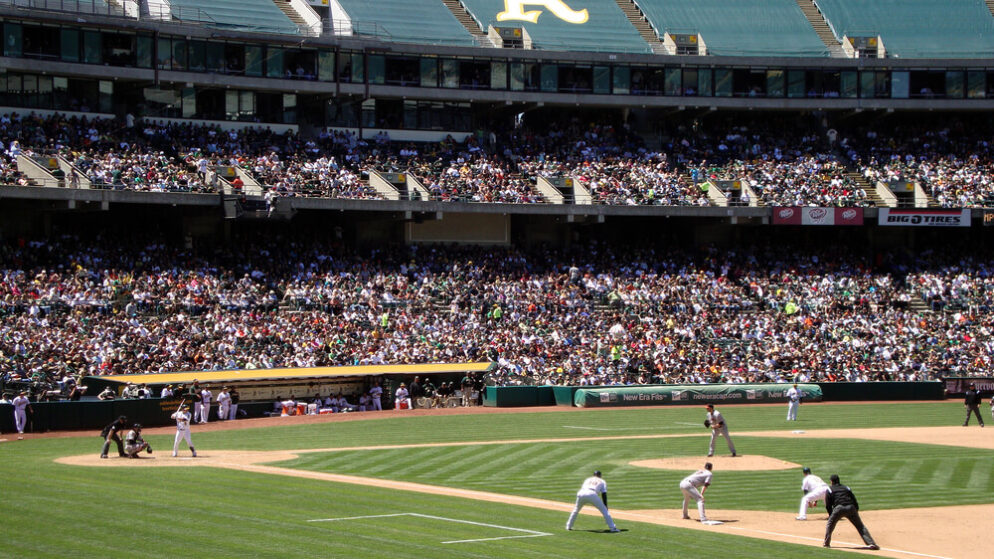

The Oakland Athletics, more affectionately called the A’s, have a long history of success in US baseball. They started in Philadelphia in 1901 but moved to Oakland, California, in 1968. The move of the Oakland Athletics from Philadelphia to Oakland in 1968 was primarily initiated by the team’s owner at the time, Charles O. Finley.
Finley required a new location for the team due to numerous reasons, including financial struggles, stadium issues, and a desire to tap into the growing baseball market of the West Coast. After exploring several options, including cities like Seattle and Dallas, Finley ultimately chose Oakland as the new home for the Athletics.
This move allowed the team to start fresh in a new city and laid the foundation for their successful journey in Oakland. Since then, the A’s have been known for their winning ways, with players like Reggie Jackson and Rickey Henderson leading the team to victory.
They’ve won multiple World Series titles, showing their skill and making their fans proud. Today, the A’s are still going strong. But now the team is looking for another change of scenery; this time with plans to move to Sin City.
Moving to Vegas
This potential move marks another important change for the franchise, as the team looks to transition to a new city and continue its legacy in the world of baseball. In moving to Las Vegas, Sin City wouldn’t be gaining the iconic Oakland Athletics of former times, which featured legendary players like Reggie Jackson and Catfish Hunter.
Rather, Las Vegas would be gaining ownership represented by John Fisher, who inherited the Gap from his father, and Billy Beane, known for his role in previous ownership regimes. MLB owners are set to vote on the relocation of the team from Oakland to Nevada, with a minimum of 23 out of 30 owners required to approve the move.
The voting will take place during the owners’ meetings starting on Nov. 14 in Arlington, Texas. Such votes typically happen when there’s confidence in approval. However, despite the anticipation, there are doubts about the readiness of the A’s move. The doubts surrounding the A’s move stem from various factors.
For instance, despite the push for relocation, there’s a prominent absence of clear and detailed plans for the move. Without a solid blueprint in place, people are right to be concerned about the viability and logistics of the changeover.
Another major hurdle is the uncertainty surrounding the construction of a new stadium in Las Vegas to host the A’s. While discussions about potential stadium sites have taken place, no firm decisions or agreements have been reached, leaving the future of the team’s home base in question.
Moving a franchise also involves major financial investments, including costs associated with building new facilities, relocating staff, and re-establishing fan bases. The financial practicality of such a move, especially amidst the doubts of the post-pandemic era, no doubt raises doubts further.
So why are the A’s really moving?
The A’s decision to move stems mainly from owner John Fisher’s frustration with the long efforts to secure funding for a new stadium in Oakland. Despite years of negotiations with the city, Fisher reached a breaking point and abruptly paused talks. Instead, he announced plans to relocate the club to Las Vegas, where a proposed construction of a $1.5 billion retractable-roof stadium offers a more promising alternative.
The stadium saga in Oakland has dragged on for nearly two decades, with little progress made in finding a practical solution. Moving to Las Vegas presents an opportunity to escape the gridlock in Oakland and establish a new home in a city potentially more receptive to the team’s needs.
However, the decision to move comes with its own set of challenges. Las Vegas represents the 40th-largest media market in the country, significantly smaller than the No. 6 market the A’s currently share with the Giants in the Bay Area. This shift could impact the team’s visibility and revenue streams, raising questions about the long-term consequences of the relocation.
The A’s have already received $380 million from Nevada’s government to help with the move. This money came after a special meeting where lawmakers voted on SB1, thanks to the A’s lobbyists and various actors in the tourism industry in Las Vegas.
To cover the rest of the move’s cost, which is about $1.1 billion, Fisher plans to use a mix of borrowing money and selling a bit of the team to new owners. The A’s leadership has teamed up with Goldman Sachs to borrow the money, which they’ll pay back with interest over time.
Recently, The Oakland Athletics unveiled new designs for their proposed $1.5 billion stadium in Las Vegas. The stadium will feature a fixed roof, accommodate 33,000 fans, and offer scenic views of the city’s skyline. One highlight is the massive jumbotron, set to be the largest in Major League Baseball at 18,000 square feet.
Construction is set to begin in April 2025 after the Tropicana Casino hotel closes in April 2024 and undergoes a year-long demolition process. The stadium will cover nine acres of the site, with an additional three acres reserved for a plaza. Bally’s Corporation will also develop a new casino hotel on the remaining 26 acres as part of the project.
The Athletics plan to complete their ballpark by 2028, but a major concern with the plan is the limited parking available. With only 2,500 spots selected, there’s a major gap in the estimated number of fans that would attend games.
Even with assumptions about attendees walking, using rideshare services, or carpooling, there won’t be enough parking for thousands of fans. This shortfall could lead to more disappointment, especially considering the team’s current performance struggles in the major leagues.
Final Thoughts
Relocating a sports team involves more than just changing addresses. It affects fans, local businesses, and the community as a whole. Without adequate consideration and planning for the impact on Oakland and its residents, there are concerns about the consequences of the move.
Without concrete plans, resolution of stadium issues, consideration of community impacts, clarity on financial aspects, and acknowledgment of historical significance, the move remains uncertain.



